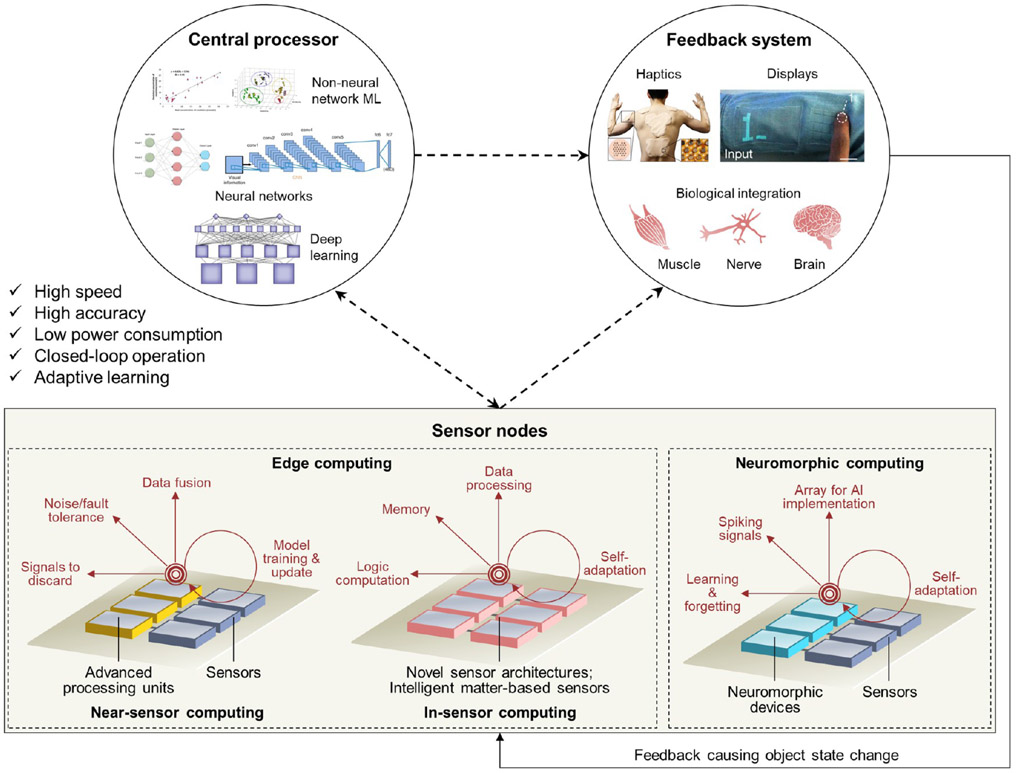Figure 15.
A vision for intelligent sensing systems with advantages listed on the left. Edge computing (including near-sensor and in-sensor computing) and neuromorphic computing are plausible ways of achieving sensor intelligence. They are not mutually exclusive and may be implemented in a single system. AI algorithms will be implemented in both central and edge processors. A feedback mechanism not only informs the user but also completes closed-loop operation. Integration with biological tissues permits two-way communication in various forms (details in Figure 16). Dashed black arrows indicate the direction of data flow. Images of non-neural network ML (machine learning) adapted with permission from ref 156. Copyright 2018 American Chemical Society. Neural network schematic adapted with permission from ref 969. Copyright 2020 Springer Nature. Deep learning schematic reproduced with permission from ref 970. Copyright 2015 Nature Publishing Group. Haptics image adapted with permission from ref 895. Copyright 2022 Springer Nature. Display image adapted with permission from ref 605. Copyright 2021 Springer Nature.

